7 strategies to convert an established audience to paying customers


Are you wondering how you can convert your established audience into paying customers? You may have built up an audience on YouTube or Instagram or you may even have a booming Facebook page with thousands of likes. But converting an audience to a customer base can be tricky.
Now, I’m assuming that you have a product, most likely a beautifully created and insanely helpful online course. (Which by the way, is brilliant! Online courses make up 60% of my online income.) If you don’t have your product yet, don’t worry, I have tips for you, so keep reading. But how do you connect your established audience to your product? How do you bridge the gap if you’ve never sold an online course before?
Prep for sales, even while creating
Poll your audience
If you’re still in the beginning phases of creating your online course, make sure to poll your audience. Get their feedback on your course topic idea before you invest months and months of hard work. This will ensure that your launch is received with a standing ovation instead of crickets.
Below you can see an example of a poll I did on Facebook to test out the idea of creating a mini course on guest posting for my audience. I received a resounding “yes” at 96%, which gave me a ton of confidence in a successful launch. Create an Instagram post and ask for their feedback on your idea. Create a YouTube video, a Facebook post, or send out a survey directly through your weekly broadcasts. Wherever you’ve built your following, get their input.
If you’re already creating your course and you didn’t poll or survey your audience, not all is lost. You can always ask for their feedback and improve your course. I still make constant updates to my courses as new strategies emerge and the online world changes.
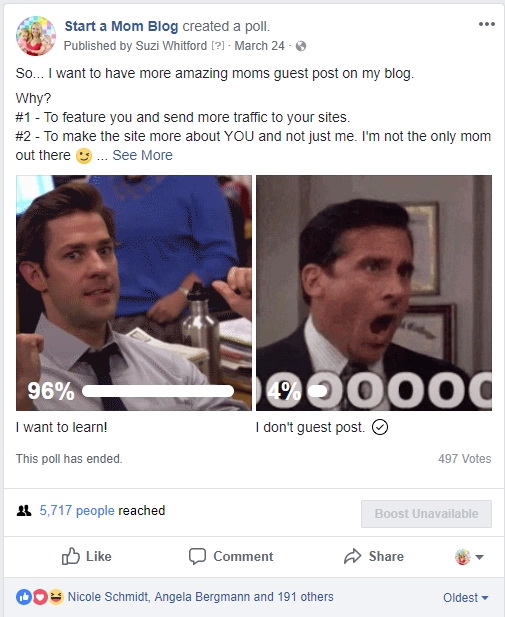

Drop hints to keep them warm
In the process of making your online course, make sure to consistently hint to your audience that you’re creating something special for them. Take them on the journey with you. You want to keep them warm as you’re working on putting your course together.
A warmed up audience will convert higher into paying customers than an audience that has no idea what you’re working on. Below are two Facebook posts that continue to hint to my audience on the progress of my course. I never shy away from including a few personal tidbits in my updates—allow your audience an opportunity to relate to you.
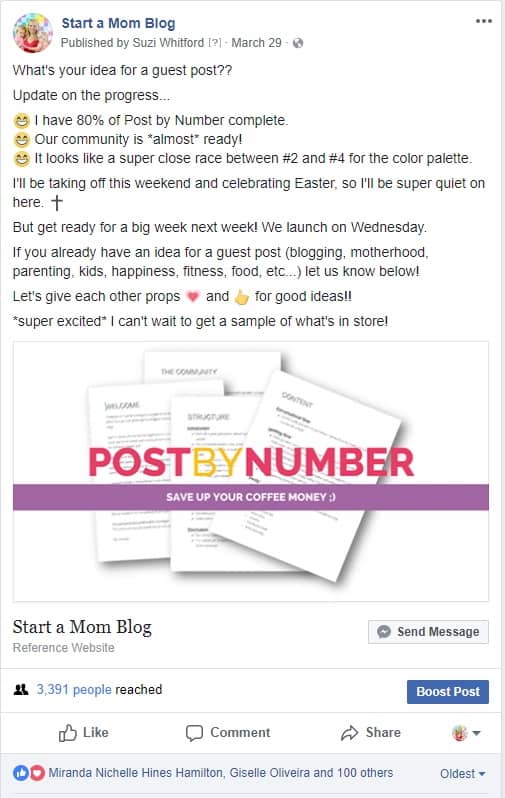

Dropping hints and keeping your audience warm takes a ton of pressure off of your launch day. You’re dating your audience and giving them hints on what’s to come. This builds both your confidence in your launch and their confidence in your product. So that when the big day comes, and you ask for their hand in marriage (or for them to open their wallet), it’ll be a huge success.
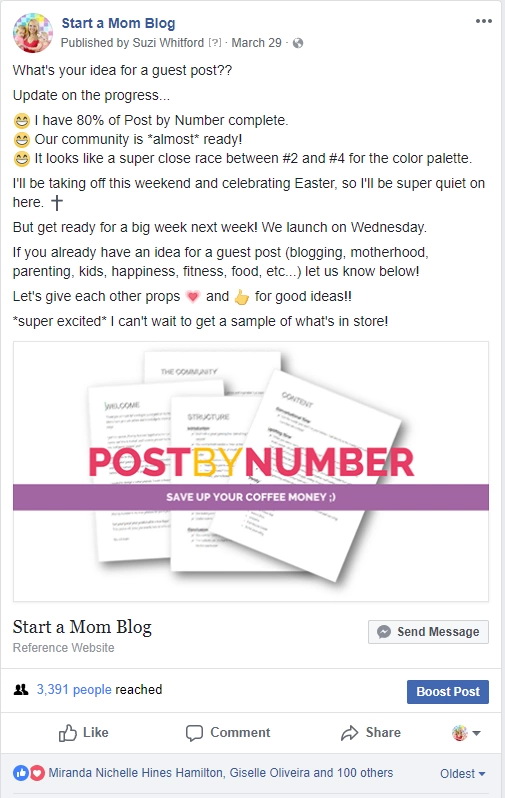

Build trust during your launch
Trust is at the key of converting an audience to a customer base. The fastest way you can build trust with your audience is through live video. You’re getting as real as possible with your loyal followers and allowing them to see you in the moment. No fancy rehearsed scripts or perfectly planned slides. Just you, being real, and sharing your hard work.
My past few course launches have all happened over Facebook Lives. For the launch of my most recent course, I had over 250 people watching Live as I walked through the benefits of the course while sipping a cup of coffee, showed them a preview of the inside of the course, and answered questions on the spot.
It has been my biggest launch to date.
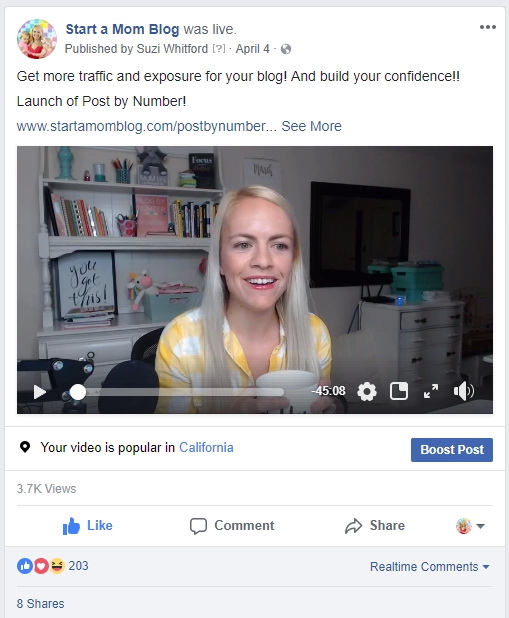

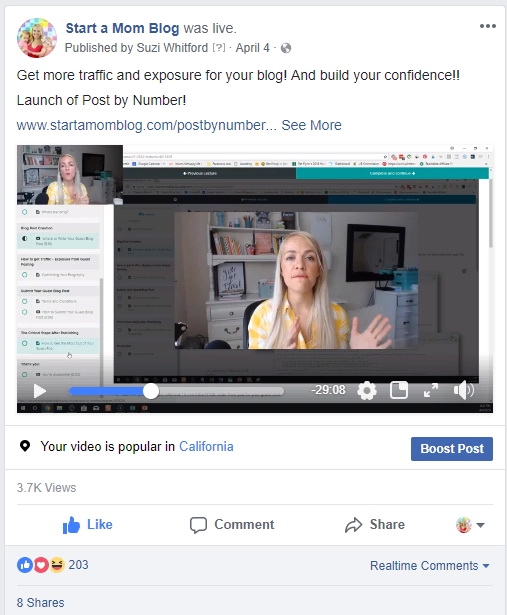

How to make sales post course launch
Share the transformation
Sometimes it’s hard for our brains to see the outcome of an investment. Eliminate that barrier for your audience. Paint the picture of how their life will be different once they’ve taken and implemented your course. Will they be healthier and fit easier into their favorite pair of jeans? Perhaps they will be able to paint like a professional and proudly show off their art. Or will you ensure they can code confidently and ask for a raise at work?
Give real and concrete examples of how their life will change to break down the resistance of enrolling into your course. On the converse, let them know how their life will not change if they don’t invest in your course. They will continue to squeeze into their jeans, they’ll never have the confidence to showcase their art in public or they’ll continue to spend the next 40 years in a cubicle trying to haphazardly learn HTML.
Once you present them with your course, they have two choices —invest and improve or forgo and fade—give examples of each choice.
Share testimonials frequently
Next up when converting an audience to customer, share past experiences of others. In the same way you hinted to your audience and kept them warm before the launch of your product, make sure to keep them engaged after the launch too. Don’t let all that wonderful momentum just die down.
As testimonials from recently enrolled students come in, showcase them on your social media channels and in your email broadcasts. Also, add them to your sales page. Social proof of others loving and benefiting from your product speaks volumes.


Showcase the testimonial and casually link back to your product without a big call to action. Ask one of your successful students for a video testimonial, this will increase your conversion rates.


As students enroll, use that as social proof to help others invest in your course too.
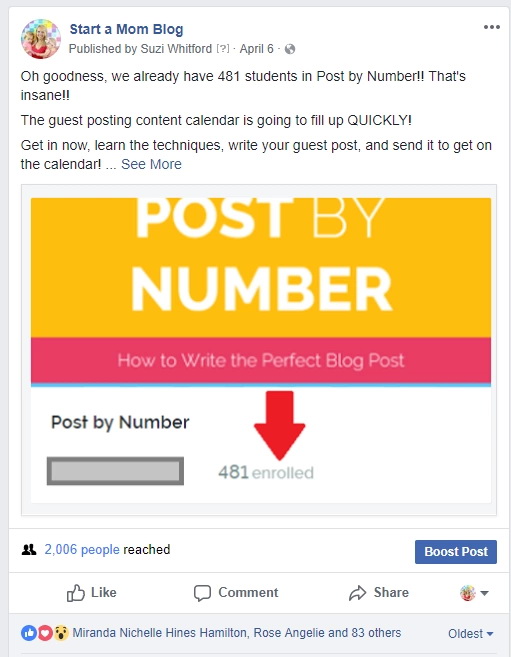

Retarget with Facebook Ads or email marketing
A bit more advanced technique to convert your already established audience into paying customers would be to retarget them with Facebook ads.
If someone has visited your sales page but did not make a purchase, retarget them with a coupon or a special one time bundle. If you’re hesitant on spending money on Facebook ads, you could tag subscribers who click a specific link in your weekly broadcasts or welcome sequence and add them to a special sales sequence to convert them into customers.
Offer an upsell after a free course
A softer way to ask for sales is to present it as an upsell after enrollment in a free course. Teachable makes this super easy with the ability to add upsells after free or even paid courses.
You can give away a high value free course to build rapport with your reader. And as an upsell, present your paid course—the logical next step for your reader.
My upsells convert between 2-36% and bring in six figures every month on auto pilot. I just share my free course with my readers, give them massive amounts of free value to build rapport and trust and let the Teachable system do the selling for me.
Launch and funnel successfully
If you’re already built an audience, the hard work is done. Converting a member of your audience to a customer doesn’t have to be difficult either. Now the fun begins as you help your readers see the value of your online course. You know it will change their life, you just have to help them understand that too.
And if you’ve nurtured and built up trust with your audience, the sales process is easy and fun. I’ve created over nine different online courses all with different price ranges. My most recent launch of “Post by Number” was my least expensive course and my biggest launch to date.
I attribute a lot of my success to the tips I shared in this post. If you’d like to get to know me more, you can find me at www.startamomblog.com.